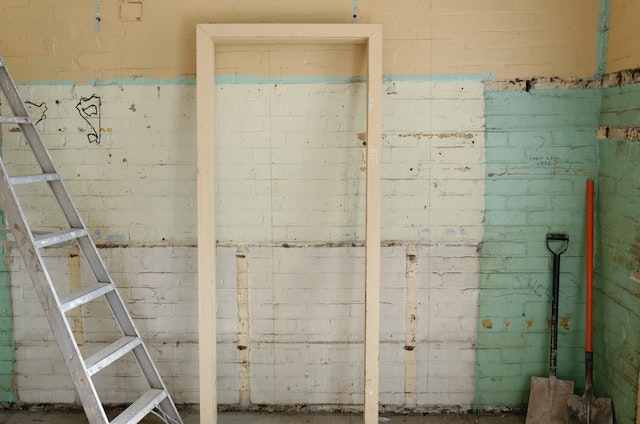Are you looking to upgrade your door to an energy-efficient model? If so, you may be curious about the cost of such an upgrade. You are in luck because this article is your ultimate guide to door replacement cost and what you can do to make the project more affordable. Here, we will go over the typical costs of a door replacement project, as well as door replacement grants and other financing options that you can use to cover the cost of your energy-efficient upgrade. From budgeting tips to financial assistance, this post covers everything you need to know about door replacement cost. So keep reading to find out how much you will pay for an energy-efficient upgrade!
Factors that affect door replacement cost
When it comes to replacing your door with an energy-efficient model, there are several factors that can affect the overall cost of the project. Understanding these factors can help you budget effectively and make informed decisions about your upgrade.
The first factor to consider is the type of door you choose. There are various options available, including solid wood, fiberglass, and steel doors, each with its own price range. Solid wood doors tend to be more expensive but offer a classic, high-end look. Fiberglass doors are durable and energy-efficient, making them a popular choice for many homeowners. Steel doors are known for their strength and security, and they are often the most affordable option.
Another factor to consider is the size of your door. Larger doors will generally cost more to replace than smaller ones. Additionally, if your door frame needs to be replaced or modified to accommodate the new door, this can also add to the overall cost of the project.
The level of customization you desire can also impact the cost. If you opt for a basic, off-the-shelf door, it will likely be less expensive than a custom-designed door with special features or unique finishes.
The installation process itself is another important factor to consider. Hiring a professional to install your new door can increase the overall cost, but it ensures that the job is done correctly and efficiently. However, if you have experience with DIY projects, you may be able to save money by installing the door yourself.
Finally, the region in which you live can influence the cost of a door replacement. Prices for materials and labor can vary from one area to another, so it is a good idea to research local prices and compare quotes from multiple contractors.
By considering these factors, you can get a better understanding of the potential costs involved in replacing your door with an energy-efficient model. Remember to budget accordingly and explore any available grants or financial options that can help make your upgrade more affordable. With the right knowledge and planning, you can enjoy the benefits of an energy-efficient door without breaking the bank.
Types of energy efficient doors and their costs
Energy-efficient doors come in a variety of options, each with its own cost and benefits. When considering a door replacement project, it is important to understand the different types of energy-efficient doors available and how they can impact the overall cost.
One popular option for energy-efficient doors is fiberglass. Fiberglass doors are known for their durability, low maintenance requirements, and excellent insulation properties. They are resistant to warping, rotting, and cracking, making them a long-lasting and cost-effective choice. Fiberglass doors can range in price, starting from around $500 and going up to $2,000 or more, depending on the size, style, and additional features.
Another option is steel doors. Steel doors offer great security, strength, and energy efficiency. They are typically more affordable than fiberglass or solid wood doors, with prices ranging from $200 to $1,500 or more. Steel doors can be a budget-friendly choice for homeowners looking to enhance their energy efficiency without breaking the bank.
If you are seeking a high-end, classic look, solid wood doors may be the ideal option for you. Solid wood doors are not only aesthetically pleasing but also provide excellent insulation and soundproofing. However, they are generally the most expensive option, with prices starting at around $1,000 and going up to several thousand dollars, depending on the type of wood, design, and customization.
In addition to the type of door, other factors such as size, customization, and installation costs can also impact the overall price of the project. Larger doors will generally cost more to replace, while custom-designed doors with special features or finishes can also increase the cost. Hiring a professional installer will add to the overall expenses, but it ensures a proper and efficient installation.
By understanding the different types of energy-efficient doors and their associated costs, you can make an informed decision that fits your budget and preferences. Remember to consider the long-term benefits of energy efficiency, such as reduced energy bills and increased comfort, when making your choice.
Grants for energy efficient door replacement
If you are considering upgrading your door to an energy-efficient model, you may be concerned about the cost involved. The good news is that there are grants available that can help offset the expense of a door replacement project. These grants are specifically designed to encourage homeowners to make energy-efficient improvements, including replacing old doors with energy-efficient ones.
One popular grant program is the Weatherization Assistance Program (WAP), which is funded by the U.S. Department of Energy. This program provides financial assistance to low-income households to improve their energy efficiency and reduce their energy bills. While the focus of the WAP is on overall home weatherization, door replacement can be included as part of the project. To qualify for this grant, you must meet certain income eligibility requirements, and the program is administered by local agencies or community action organizations.
Another grant program to consider is the Residential Energy Efficiency Loan (REEL) program, which is available in certain states. This program provides low-interest loans to homeowners for energy-efficient home improvements, including door replacements. The loans can be used to cover the cost of materials and installation, and they often come with attractive repayment terms. To find out if the REEL program is available in your state, you can visit the website of your state's energy office or contact a local lender that participates in the program.
In addition to these grant programs, there may also be local or regional programs that offer financial incentives for energy-efficient door replacements. These programs can vary widely, so it is worth researching what is available in your area. Some examples of local programs include utility company rebates, tax credits, or even cash incentives for making energy-efficient upgrades.
When applying for grants or other financial assistance programs, be prepared to provide documentation, such as income verification or proof of ownership. It is also a good idea to gather quotes from contractors and have a clear idea of the cost of the door replacement project before applying. This will help you determine how much funding you need and increase your chances of securing financial assistance.
By taking advantage of these grants and financial assistance programs, you can significantly reduce the out-of-pocket costs of an energy-efficient door replacement. These programs not only help you save money upfront but also allow you to enjoy long-term energy savings and increased comfort in your home. So do not let the cost of a door replacement hold you back from making this valuable upgrade. Explore your options and take advantage of the grants and financial assistance available to you.
Other financial options for door replacement
Looking to replace your door with an energy-efficient model but worried about the cost? Do not fret! In addition to grants and financing options, there are other financial options available to help make your door replacement project more affordable.
One option to consider is a home improvement loan. Many financial institutions offer loans specifically for home improvement projects, including door replacements. These loans typically have low-interest rates and flexible repayment terms, making them a viable option for homeowners looking to upgrade their doors without draining their savings. You can research different lenders and compare loan terms to find the best option for your needs.
Another financial option is to utilize a home equity line of credit (HELOC). A HELOC allows you to borrow against the equity you have in your home. By tapping into your home's equity, you can access funds to cover the cost of your door replacement project. HELOCs often have competitive interest rates and can be a cost-effective way to finance your home improvements.
If you have a credit card with a low-interest rate or a promotional 0% APR offer, you can also consider using it to finance your door replacement. This option allows you to spread out the cost of your project over time and potentially avoid interest charges if you pay off the balance before the promotional period ends. However, be mindful of your credit limit and ensure that you can comfortably repay the amount charged to your credit card.
Lastly, you can explore local and regional programs that offer incentives for energy-efficient home improvements. These programs may provide cash rebates, tax credits, or other financial incentives for upgrading to energy-efficient doors. Research what is available in your area and take advantage of any programs that can help offset the cost of your door replacement.
By exploring these financial options, you can find a solution that fits your budget and makes your energy-efficient door replacement more attainable. Remember to consider the long-term savings and benefits of an energy-efficient door when making your financial decision.
The benefits of upgrading to an energy-efficient door
Upgrading to an energy-efficient door can bring a multitude of benefits to your home. Not only will it help reduce your energy consumption and lower your utility bills, but it will also improve the comfort and livability of your space. Energy-efficient doors are designed to provide superior insulation, keeping your home warmer in the winter and cooler in the summer. This means you can say goodbye to drafty rooms and uncomfortable temperature fluctuations.
In addition to the energy savings, upgrading to an energy-efficient door can also enhance the overall value and curb appeal of your home. These doors are often stylishly designed and can significantly improve the aesthetics of your entryway. They come in a wide variety of colors, finishes, and styles to complement any architectural style or personal preference.
Furthermore, energy-efficient doors offer increased security and durability. Many models are equipped with advanced locking systems and reinforced materials, making them more resistant to forced entry. They are also built to withstand harsh weather conditions and are less prone to warping, rotting, or deteriorating over time.
Finally, upgrading to an energy-efficient door is an environmentally-friendly choice. By reducing your energy consumption, you are decreasing your carbon footprint and contributing to a more sustainable future. With all these benefits combined, it is clear that investing in an energy-efficient door is a wise choice that will improve your home in numerous ways.












